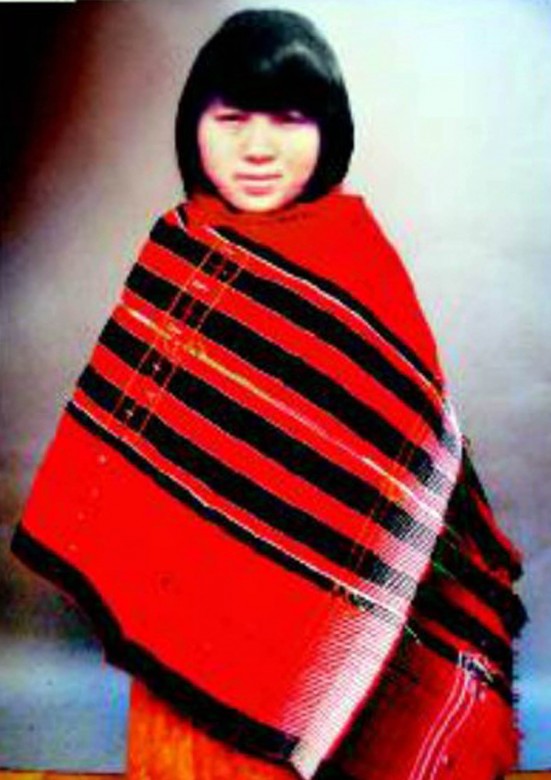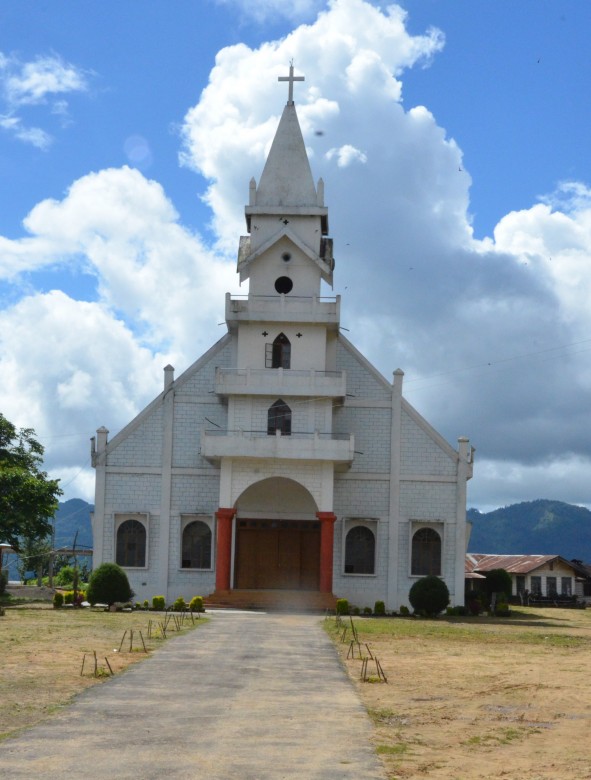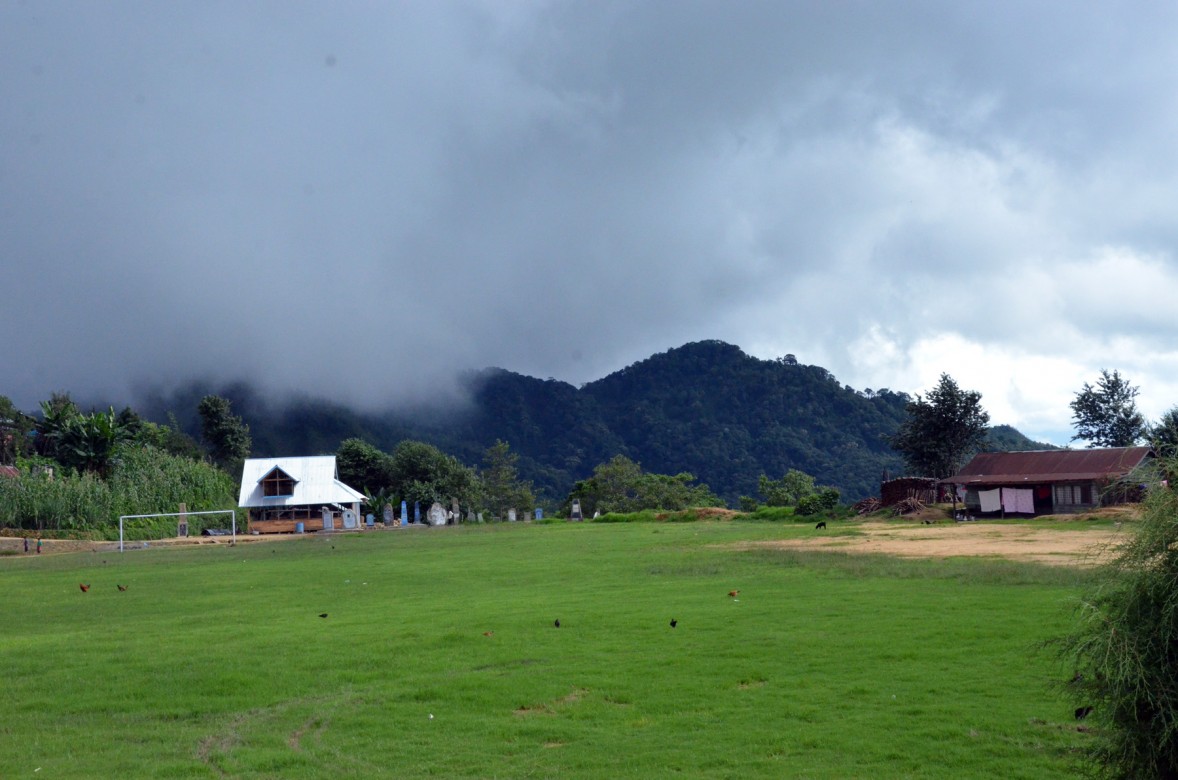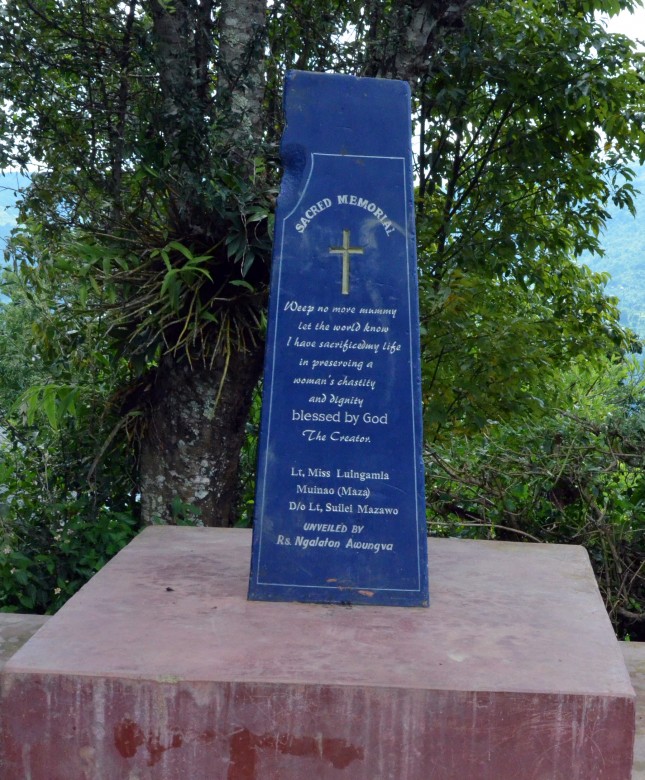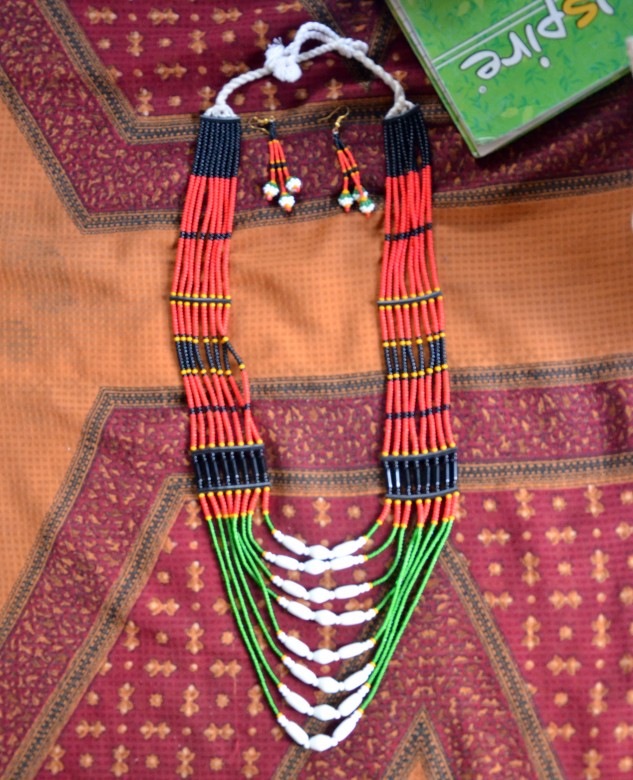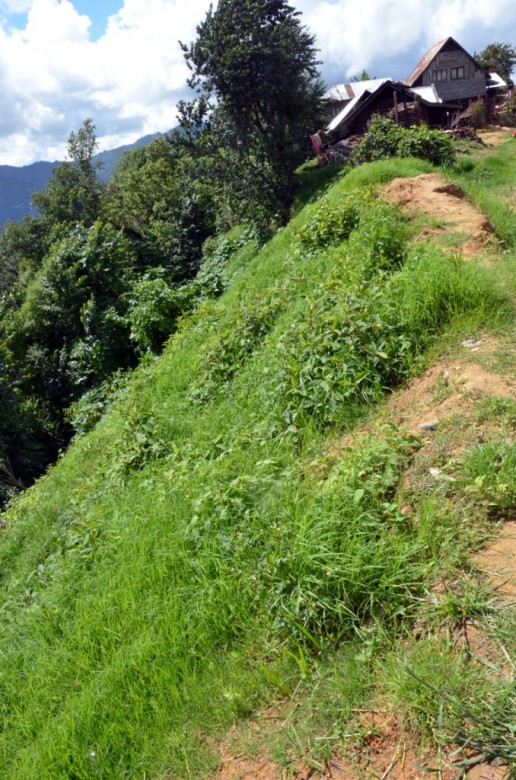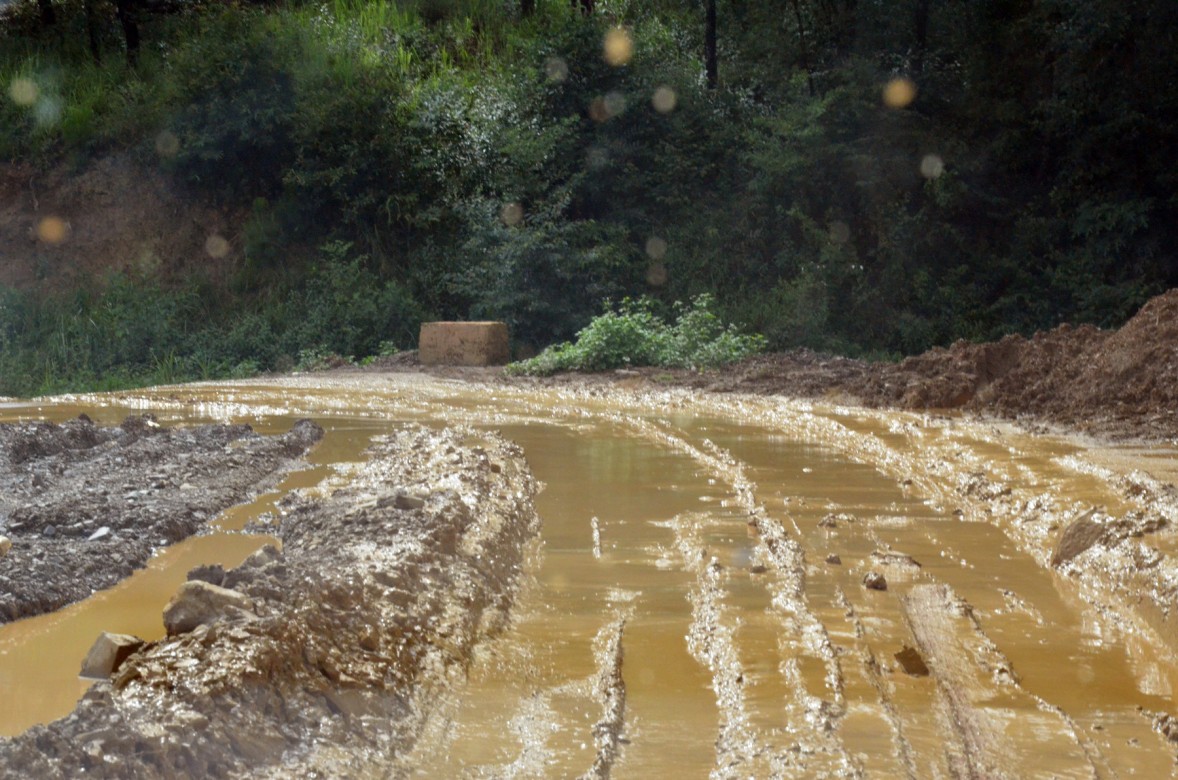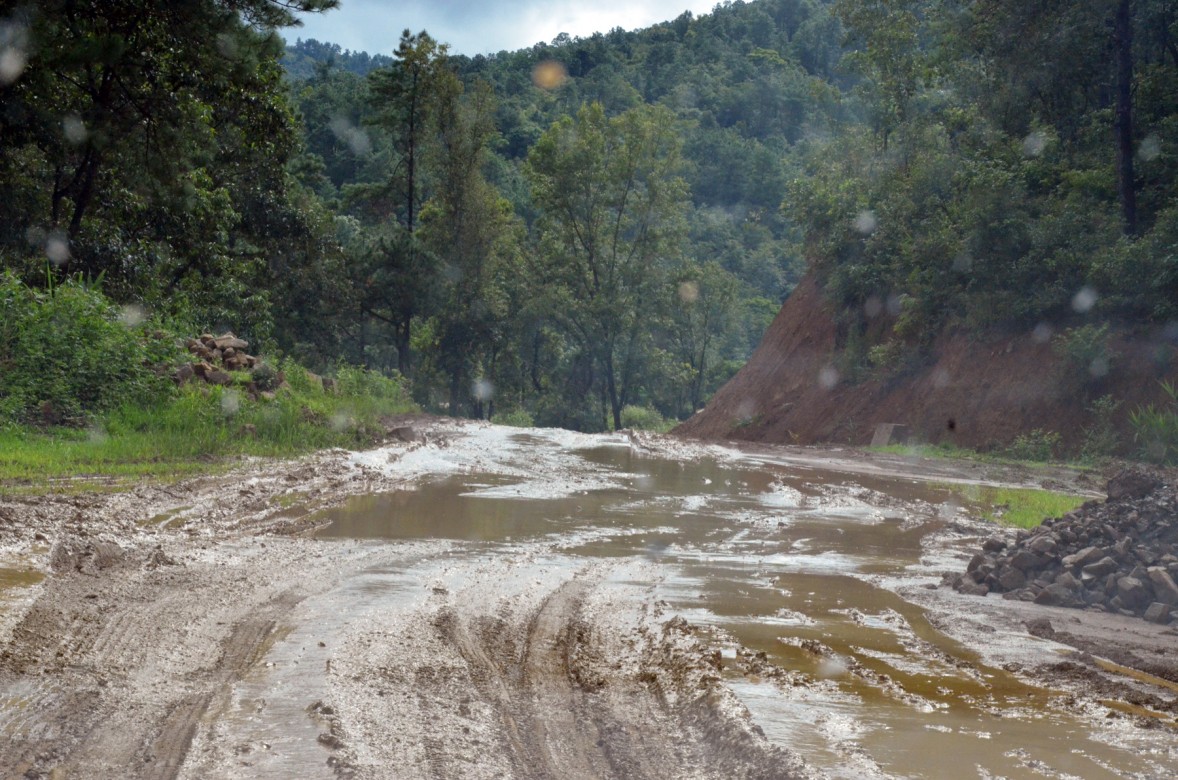By Chingtham Balbir Khuman
- On July 2, 2015, four of us from Imphal, comprising myself, Mr. Senjam Bishorjit (just completed graduation in Zoology from the Liberal College), Miss Chingkheimayum Daya (Currently a teacher in a private school) and Miss. Chingkheimayum Sana (M. Sc. Mathematics, final year in the Manipur University) visited Ngainga village. The village, about 2348.17 hectares (5802.45 acres) in size, based on a hill top, inhabited by the Tangkhul community, is located in the western part of Ukhrul district, at about 17 km. from the district headquarters.
- Our interest to visit Ngainga grew stronger following an interaction with Dr. Malem Ningthouja of the Campaign for Peace & Democracy (Manipur), who had visited the village in the winter of 2014, to find some documents related to the murder of Miss Luingamla by the Indian ‘security’ forces in 1986. We were being informed about the scenic beauty of Ngainga village, its calm and peaceful location, the comradely attitude of the villagers, and the prospect of sustainable development through community initiatives. We thought that, we must visit Ngainga, to have an overview idea about it and potential future planning.
- The initial contact with responsible persons to guide and support us at Ngainga was arranged by the CPDM. Accordingly, we made contacts with the general secretary of the Women’s Union of Ngainga Mrs. Tharawon, the general secretary of the Tangkhul Katamnao Long Mr. Leiyolan Vashum, and Mr. Thankson and Mr. Deben of the Volunteers for Village Development, a non-governmental organization based in Ukhrul. Initially, Leiyolan was asked to guide us to the village from the Ukhrul town, as we are unaware of the route.
- Our journey started, at around 6 a.m., from Imphal. On the way, at the Lamlai market, we bought some pineapples from the Lamlai market as aunty Tharawon was curious to have some piece of it, as those are not grown in her village. Other than pineapples, we took some edible water vegetables (stems, seeds and roots) such as eshing ekai thabi and thangjing, which were rarely grown in the hills.
- As we drove in a car, we have discovered that the road, particularly after Lamlai, was dotted along with several stretches of the worst conditions, due to destructions brought about by rain. In several dotted stretches, running into several hundred meters, those were marked by muddy, rugged and slippery conditions. There were several risky curves and turnings. The situation considerably delayed the speed of driving to cover a distance of about 82 km from Imphal to Ukhrul. We could reach the Ukhrul town only at around 9:20 am. The road requires proper attention from the government and other stake holders.
- At the Ukhrul town we were welcomed both by Leiyolan and Thankson. We were expecting a long interaction with Leiyolan about his activism and the organizational functioning of TKS. Unfortunately, Leiyolan could not spend much time with us, as he had to attend an urgent meeting that was called at short notice by the All Tribal Students’ Union Manipur (ATSUM). But we could sense that Leiyolan was an energetic and committed youth, with lots of responsibilities for cause of the society or community that had nominated him to the position. We are hoping to meet him again to learn from his experiences.
- After bidding adieu to Leiyolan, the burden of guiding us to the VVD office and Ngainga was shouldered by Thankson. Thankson took us to the VVD office, where we met uncle Deben and some enthusiastic volunteers. The VVD was established in 1982 with the mission to create a society with sustainable livelihood where love, brotherhood and equitable life prevails: to enable self-help initiatives for strengthening the village republic. It was constituted by a General Body that periodically nominated an Executive Committee, which in turn supervise the activities of the Program Staff, Support Staff and Micro Finance. At the VVD office, we had a short preliminary interaction on two broad issues: (a) The Mapithel Dam and its fallout, and (b) Chromite drilling in Ukhrul.
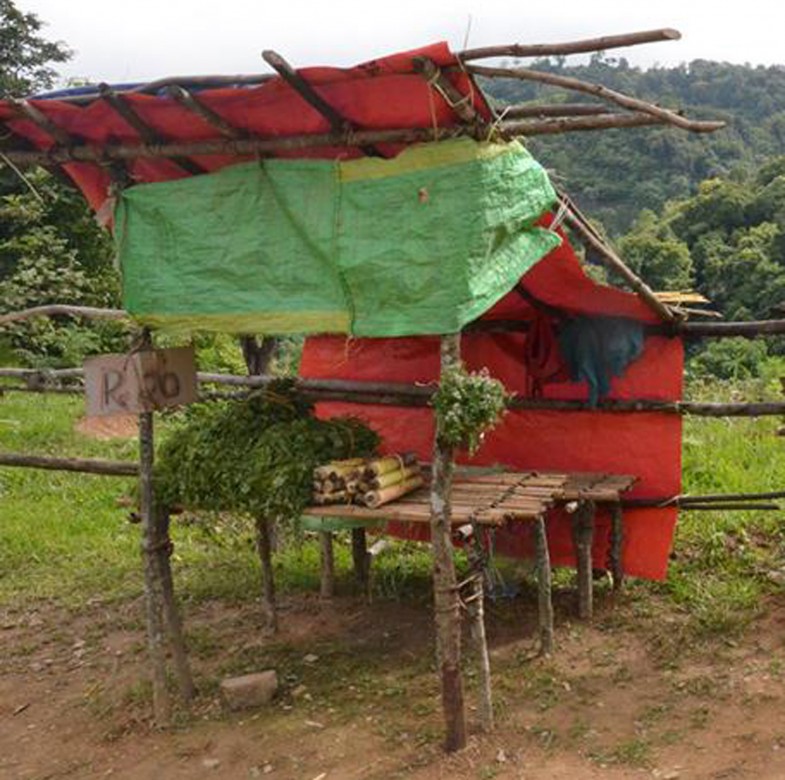
Ngainga route guardless stalls. Photo- Chingtham Balbir Khuman
- Both these issues are complex in nature, created by man of power. These two projects are the products of a where a microscopic clique of beneficiaries, who in collusion with the state and ‘investors’ had prospered (or likely to prosper) at the cost of the larger bulk of the marginal Tangkhul peoples. There are powerful stake holders that enacted legitimacy to exploit other through misinformation and use of muscle powers, at the cost of the ecological balance, sustainable development and peace for the Tangkhuls. The manner that these projects had been or would be executed can be studied to reveal how monetisation, commodification and intrusion by big and destructive capital had brought about greed for profit, mistrust, oppression, exploitation, and inequality in the Tangkhul world. These two issues can be the best reference to raise questions against the ideological position and strategic policies of the attempted pan- Naga ‘revolution’, which had been spearheaded by the armed parties such as the National Socialist Council of Nagalim (IM) and others.
- The interaction at the VVD office was very cordial and enlightening. Uncle Deben was very energetic, open minded and practical in approach. He had spent many time there, worked with the people, ate with them and shared many things with the volunteers. He being from a Manipuri Brahmin (Meetei Bamon) family background; his commitment, lifestyle, and relation with the volunteers, who are from the scheduled tribes, to some extent deconstructed the prevailing stereotypes and polemics about discriminations, hatred and enmity along religious and communal lines. What was being upheld, at the grass roots, according to what we had noticed, was collective work amongst those who shared common objectives, who enjoyed doing it and who grew on it. Like uncle Deben, Thaknson was equally friendly, energetic and enterprising. He belong to the average middle class migrant family from Ngainga, who have now settled in the Ukhrul town. His nostalgia for Ngainga was persistent and he had the vision of contributing towards making Ngainga prosperous by making the village republic politically and economically self- generating.
- After the interaction, we were guided upto the Ngainga village by Thankson. Although only about 17 km in distance from the Ukhrul town, there were many sloppy curves and turnings, which have slowed down the average speed of driving. It took us around 50 minutes to finally reach Ngainga. On the way, our eyes were completely overwhelmed by the enchanting scenic beauties of the green and blue mountains, the refreshing vegetation and forests on the road sides, the vibrant terrace cultivations, the dotted traditional dwellings and community settlements. It all appeared to be exotic, full of beauty and attractions, something like a dream that were hardly been imagined.
- A unique feature, in the interior route on the way to Ngainga, which we had never noticed in our lifetime were the dotted vegetable stalls on the roadside. Those stalls had no attendants. Those stalls were marked by a platform where goods were placed on it, a price tag of the goods was fixed like a placard neatly written on a paper sheet, and a bag to put money by any customer who would purchase any of the items. The logic was: anyone buying anything from the platform would have to voluntarily drop the money into the bag. The degree of trust in sincerity, as indicated by these stalls, had surprised us a lot; in a world where the powerful sections (even amongst the Tangkhuls) have now become highly selfish for profit and would indulge in misappropriation at the cost of the marginal sections. In the so called civilized metropolitan cities, the malls and kiosks are guarded by gun holding guards and CCTV cameras to obstruct robbery and hijacking. The social picture shown to us by these unguarded stalls was totally different. It explained a robbery free society where mutual trust had prevailed above greed. We can’t predict, how long the tradition will continue. But, we were overjoyed to find it, which gives us lots of hope about building an alternative society free from the poisons of greed that has been perpetuated by the neo-liberal economy. The point is, how to carry forth to achieve the alternative society. How do we learn it from the society that enable to flourish the unguarded stalls?

Ngainga Church sponsored school hoardings. Photo- Chingtham Balbir Khuman
- While approaching Ngainga, there were highly and colourfully decorated rows of cemetery on both sides of the road. This was how the Christianised Ngainga villagers constructed the mnemonic tools to respectfully remember the deaths, with lively colours; which also suggested that the deaths were not thrown into oblivion, but the burials were being made into a visually attractive sites of tourism as well. Compared with it, the so called martyrs square, which was constructed in memory of Mayopam Ramror and Ramkashing Vashi, near the mini-stadium, at Ukhrul town, who were killed in police action on 30th August, 2014, was in a dilapidated condition, littered with dirt and garbage like wasted materials. In this regards, the so called civilised and patriotic peoples in the Ukhrul town needs to learn from Ngainga as to the manner mnemonic tools should be constructed and maintained, to preserve the aesthetic beauty and the meaning of patriotism embodied in such constructions.
- When we reached Ngainga, we were warmly welcomed by the members of the Ngainga Women’s Union at aunty Tharawon’s residence. By the time we had reached, since the people normally had their meal in the morning, we were already late for it. We were asked to have the meal before interaction with others and tour inside the village. In fact, three women had been preparing the meal that was rice and different varieties of simple cooked cuisines such as chicken curry, eromba, vegetable fry, singju, and boiled vegetables. The well prepared natural aroma of the food was tempting us a lot to jump into the kitchen. We, along with the aunty and others who were the host, sat around the dining table; the aunty led the prayer, after which we shared the delicious food. Thanks to the aunty and others for the food.
- After the meal we had an interaction with the members of the Ngainga Women’s Union, Youth’s Union, Tangkhul Naga Long and elders of the village. They were all persons with wisdom, the respectable personalities in the village, and were very much considerate about developing the village. They carried in themselves the oral narrative of the genesis of the village, the past and present, the memories of various jubilant and unfortunate happenings, the undelivered service delivery expectations from the government, the landlocked landscape locations and hardships due to the neglect by the regimes in power, and the complaints against the moribund state system. Those persons of wisdom, tested us with several simple but thought provoking questions, which could not be satisfactory responded by powerless individuals like us, who had merely visited the village to learn from them. Those simple questions made us to realise how weak and powerless persons we were, and inspire us to rethink ourselves to learn more, to work more, and to find the adequate answers. We could not offer anything in return for the hospitality and food; instead, we receive from them more wisdom, which make us today more inquisitive towards finding the means to unite and fighting for an alternative world order.
- After the interaction we had a short sightseeing tour in the village. In this, we came across the memorial tomb of Miss Luingamla Muinao (Maza) (1968-86), which was constructed and unveiled on 23 October 2011. Luingamla, daughter of late Suilei Mazawo, of Ngainga Village, was charming and hardworking She was fatally shot on January 24, 1986, inside her home by the Indian paramilitary personnel who were carrying out routine combing operation on the eve of the Indian Republic Day. It is being said that she was killed because she raised alarm while there was an attempt to rape her. People resented the killing and boycotted the Republic Day. From that year onwards, the date of the annual foundation day of the Ngainga Shanao Long was rescheduled on 26 January. Therefore, the Indian Republic Day in Ngainga Village since 1987 had been marked by the observance of the raising day of the women organisation. In the course of time, one Zamthingla Ruivah a woman neighbour of Luingamla, in memory of Luingamla designed a woollen cloth for women known as Luingamla Kashan, a piece of which was shown to us by our host. They also showed to us some pieces of necklace and earing that were designed and attributed to in the name of Luingamla. The inscriptions on the three faced column conveys the narratives of the brutal sexual crimes and murders committed by the Indian law enforcing agents, the valiant struggle by the helpless victims to protects the rights, chastity of women’s social being, and the memory of the tortures and pains. Inscription on one side of the three faced column reads: “Weep no more mummy let the world know I have sacrificed my life in preserving a woman’s chastity and dignity blessed by God the Creator. Lt. Miss Luingamla Muinao (Maza).” The visual resonance of the memorial, filled our hearts with pain, and we asked ourselves: how long India will indulge in killing and coercing the innocents, to advance the greedy course of militarisation, to serve the oppressive and exploitative neo-liberal interests? What happened to the culprits who killed Luingamla? Were they punished for name sake or were they really befittingly punished? What have India done, so far, to mentally compensate the loss of Luingamla?
- Our next attention was the tradition of the erection of the dried tree trunks and inscribed family genealogy on concrete structures in the courtyard. It has been a tradition that, amongst the rich and prominent families, a particular tree trunk christened as “Tarung” in Tangkhul dialect, was erected in the front courtyards. These appeared to be symbols of pride, wealth and prominence. The concerned family erected it, after making a traditional announcement, followed by symbolic ritual and a feast that was offered to the neighbourhoods. Other than this, there was also a tradition of erecting stone structures in the front courtyard where names of the patriarchal line of the respective families were neatly inscribed. But the size, material composition, artistic rendering and material adornment of these structure varied depending on wealth. These true traditions, in their diverse material forms, which comprised an overarching tradition, would suggest that despite the holistic notion of community as above the individuals and some forms of egalitarianism; some form of social divide along the lines of wealth have been gradually taking shape in the village. The search for wealth, opportunity and prospect, has been a reality; which continue to promote emigration in other places in search of job and wealth. Our guide, Thankson, belong to an emigrant family, although he continue to possess the nostalgia of Ngainga. But nostalgia alone will be insufficient to make Ngainga prosperous; the village ‘diasporas’ must come back and invest in collective initiatives to make Ngainga recover from what our host had disappointingly paraphrased as a situation of ‘underdevelopment’. In reality, the villagers live in a situation, where the women union was badly in need of fund to construct its separate office and secular community hall. The question is: who will fund it?
- One of the distinctive and largest constructed structure that we came across was the Baptist Church. The church had sponsored primary school. We had entered the Church only to discover lack of infrastructure, although well-orderedly maintained and neat and clean inside. We had wanted to enter into the school complex to have a few look on the infrastructure inside and the probable facilities rendered to the villagers. We did not enter; but, we had the impression that it was meant for rudimentary teachings and there was lack of facilities to fulfil the needs of the students that require additional input and supports. There was also an elaborate open play field in the village, where periodical tournament across villages were held from time to time. The field was left open for anyone to play, particularly soccer, but without a gallery and other infrastructure. There was no indoor stadium and there was considerable lack of logistic facilities for a variety of sports. Although Manipur is being acknowledged as a hub of sports in the Indian sub-continent; it seems to us that, in the context of the inadequate infrastructure, facilities and incentives in sports, the sports loving children and youth of Ngainga may have the rare chance to come up to the status of compatible only through several thousand extra miles of exhaustive commitment had hard working. Why have the Manipur Sports Department neglected Ngainga and many others? If the proposed establishment of a Sports University in Manipur become a reality; will the government care for the hitherto neglected community of potential sportspersons in Ngainga and elsewhere?
- We were shocked at learning about the complete neglect of public transport system and medical sector by the government. Firstly, there is no government transport system connecting Ngainga and ukhrul and other places via Ngainga. Currently, there is an irregular taxi service between Ngainga and Ukhrul town run by private owners. For any emergency purpose at any time or to travel to other places that are not covered by the taxi service, the commuters have to find their own means. The rich are not affected by the poor transport system, but the poor had to suffer a lot when the service is not easily available to them. Secondly, there is neither a health centre nor a pharmacy in Ngainga. One had to visit Ukhrul town for medical check-up and treatment. For ‘minor’ injuries and sickness, either those are left alone for self-curing or relied on some medicines which were being kept for personal usage by some families. These two sectors, as one could see in Ngainga, exemplify the urban rural divide in terms of facilities and services. These are the two sectors that the government had largely neglected. Paving the way to privatisation of these two important sectors, in no way had brought about any substantial amount of service delivery to address the rural grievances. Driven by profit motives, the profiteers in these sectors are less enthusiastic about providing services to Ngainga and other neglected areas, as those areas would not ensure them quick and huge profit. The system, therefore, has practically perpetuated uneven growth and facilities in these important sectors. How long Ngainga should live at the mercy of the system?
- Economically, the people of Ngainga appeared to be one of the underprivileged sections of Manipur. Most of the families are depended on agriculture, forest products and weaving for survival and income generation. Over utilisation of these land resources to meet the growing need of an expanding population, had the side effects towards decline of area under cultivation, depletion of soil fertility, and decline in production scale, and so on. Many face the problems of acute shortage of water for plantation and the basic energy for domestic consumption. In sum total, the primary constraints of the families are poverty and lack of facilities for education and human resource development. Some amount of recovery or development attempts had been made by the NGO sectors from time to time. However, those attempts had not been successful in overcoming poverty, inequality and marginalisation. The situation had compelled many to become permanently depended on the mercy of the powerful, who would casually donate some amount of money in the name of social service, in exchange for support in election and other politically motivated games. These powerful power and profit hungry rulers, do not want to make the people self-reliant so that they grow and become politically autonomous; on the contrary devised tactics to make the people perpetually dependent, to suit their vested interests.
- Despite the visit, our knowledge about Ngainga is still incomplete. We lack more knowledge about Ngainga and the means to make it economically prosperous and politically autonomous. We merely had a glance of what were distinctively apparent to the eyes. However, the little things that we had come across made us believe that Ngainga had lots of potential to become one of the model villages; where there can be sustainable development through a mixture of private entrepreneurship and community initiatives. The village still possesses abundant amount of land, a huge portion of which are under cultivation and the rest of which are either underutilised or could be regenerated. What is lacking is the skill, technique and the organisation of labour to spearhead economic growth through collective initiatives, without actually compromising the ecological system. If these shortcoming is being overcome, Ngainga will become a surplus economy, which will further help in promoting other sectors, which in turn will also generate surplus. In that sense, Ngainga can become an autonomous village republic, without begging for petty funds from the greedy rich and the half-hearted government of the exploiters. What are the required skills, techniques, and organisation of labour: for this we intend to visit Ngainga again to learn more from them and also to express our views. Like the emigrant sections who had left Ngainga in search of opportunity; we, who were attracted by the comradely treatment of the host, beauty and calmness of the village, and the prospect are equally having the nostalgia about Ngainga. May Ngainga prosper soon!
The author has completed graduation in B. Sc. Life Science, in 2015, from the Zakir Husain Delhi College, University of Delhi. He is currently residing in Delhi for further studies. He can be contacted at balbirkhuman(at)gmail(dot)com



